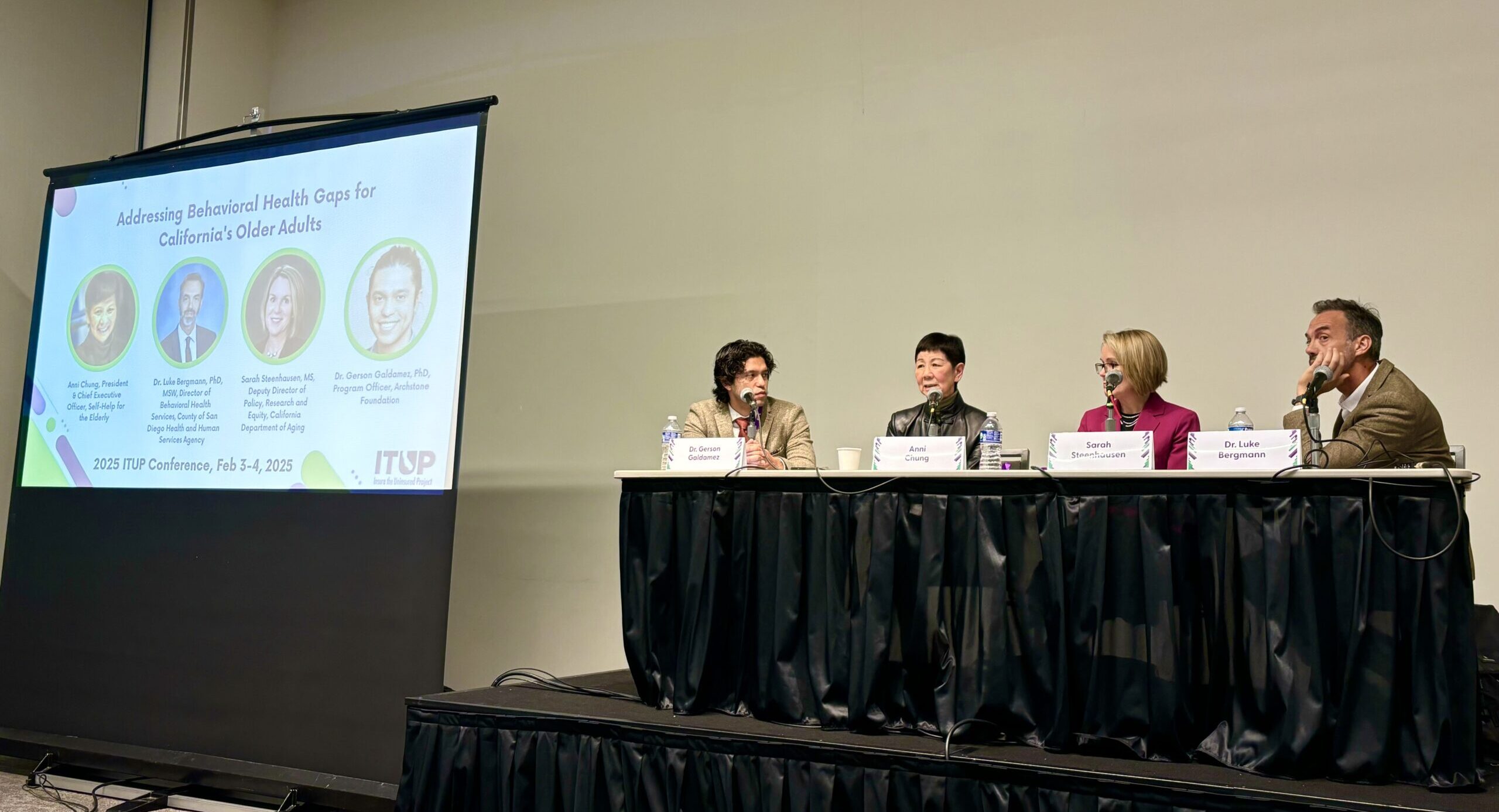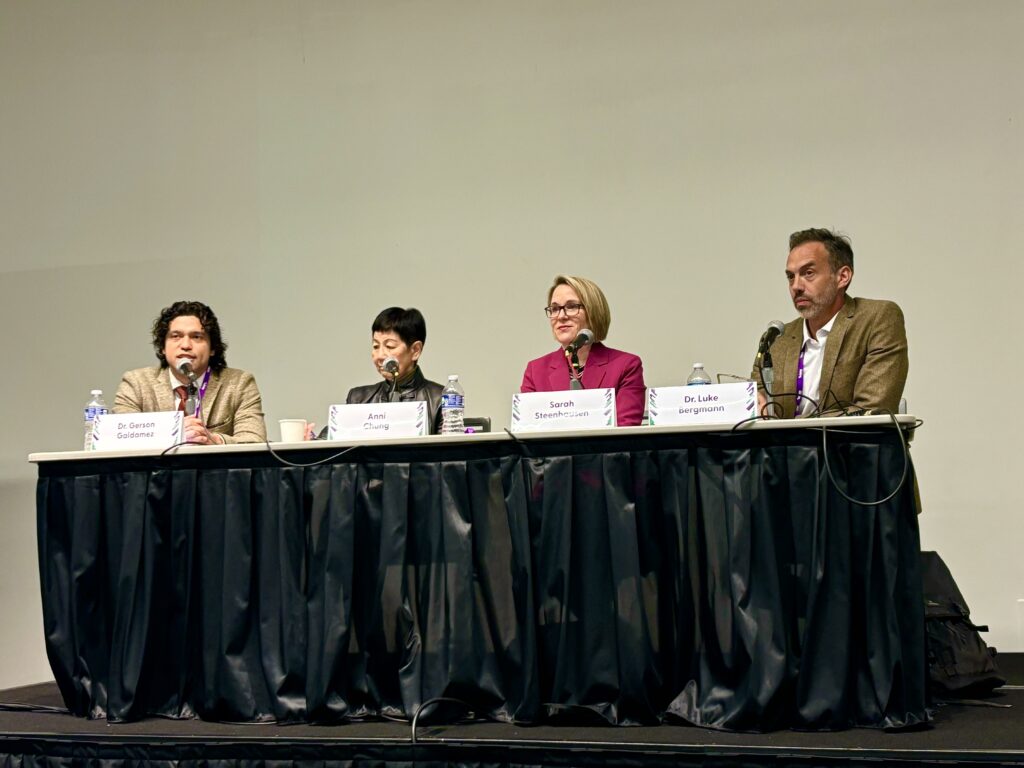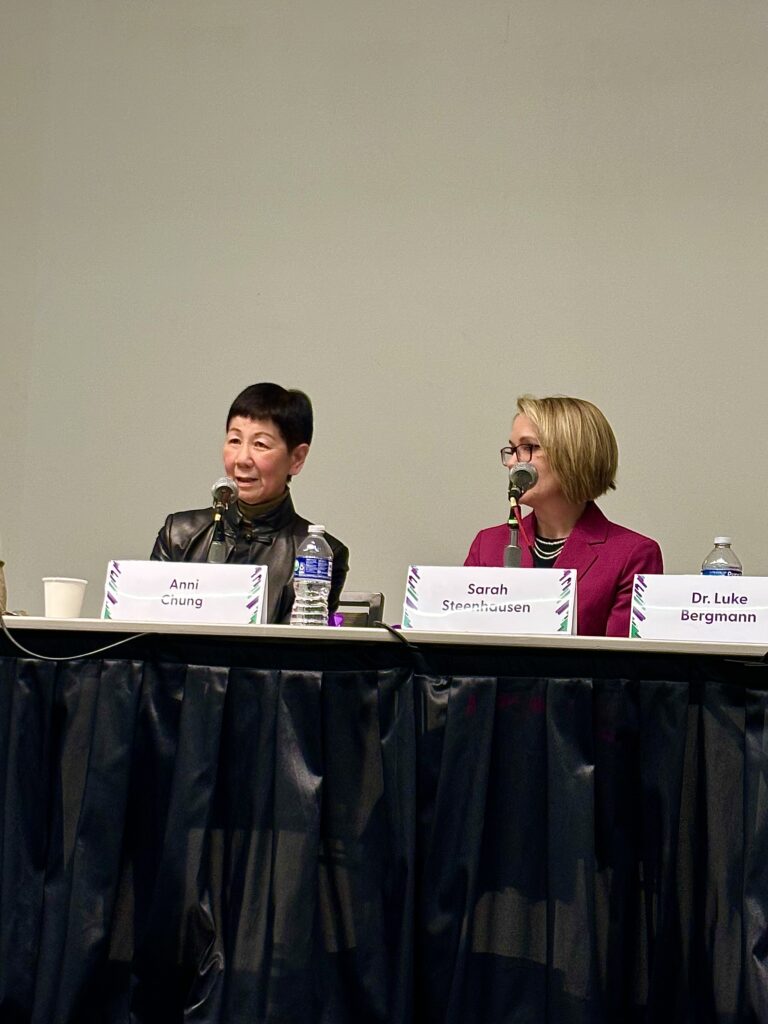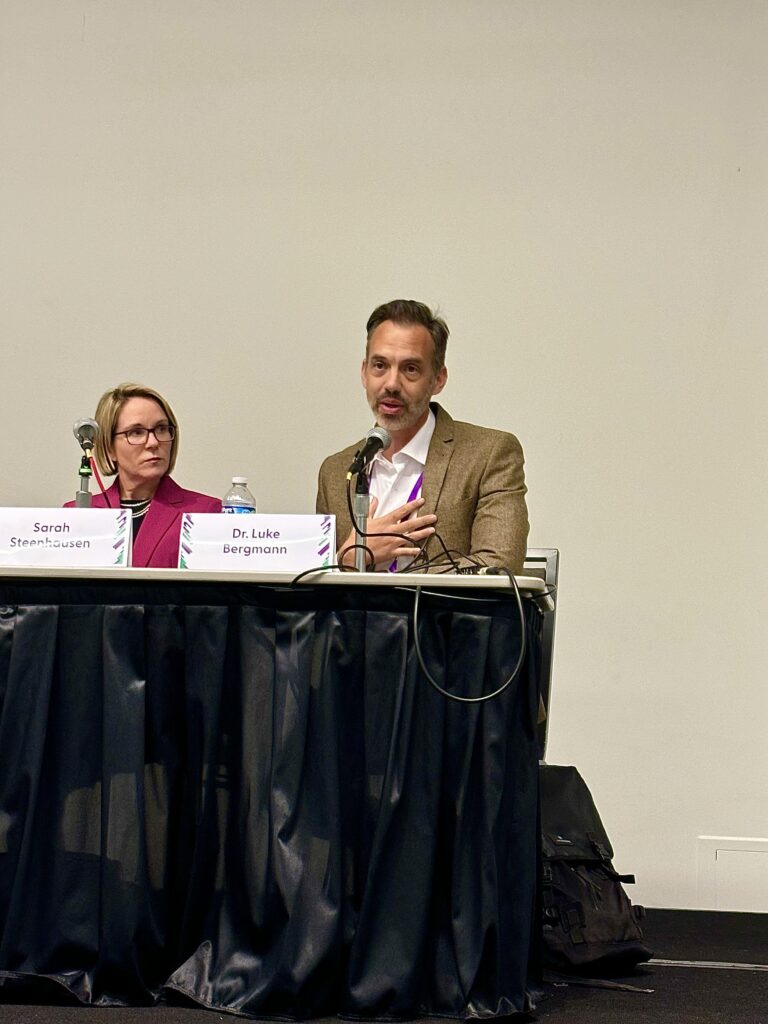Selen Ozturk
For California’s older adults, “mental health is the big gap we’ve never been able to fill,” said Anni Chung, president and CEO of Self-Help for the Elderly.
 Left to right: Dr. Gerson Galdamez (moderator), Anni Chung, Sarah Steenhausen and Dr. Luke Bergmann at a panel on older adult behavioral health held by Insure the Uninsured in Sacramento on Tuesday, February 4. (Credit: Selen Ozturk)
Left to right: Dr. Gerson Galdamez (moderator), Anni Chung, Sarah Steenhausen and Dr. Luke Bergmann at a panel on older adult behavioral health held by Insure the Uninsured in Sacramento on Tuesday, February 4. (Credit: Selen Ozturk)
SACRAMENTO — For California’s older adults, “mental health is the big gap we’ve never been able to fill,” said Anni Chung, president and CEO of Self-Help for the Elderly.
While federal funding freezes under Trump threaten to widen this gap more than ever before, barriers like social isolation and limited English are nothing new for many California seniors struggling to access help.
Since Chung’s community organization for Asian seniors began in San Francisco’s Chinatown as part of the federal War on Poverty in 1966, the neighborhood has grown to have the highest senior suicide rate citywide, with many immigrant and monolingual seniors unable to access city services.
In response, Self-Help for the Elderly has grown to service 50,000 seniors a year across five Bay Area counties through behavioral health care including mental health counseling, social services, employment training, food aid and affordable housing navigation — “but you need to integrate all this with physical health, and for that you need not only funding but trust,” said Chung at a Tuesday, February 4 panel on senior behavioral health held by Insure the Uninsured Project in Sacramento.
The pandemic only made these gaps starker.
“We all feel lonely sometimes. But when you don’t have anybody to call, things like where your next meal is coming from when you can’t go out to get groceries, can be the final straw,” Chung explained. “One senior came to us and said the most depressing thing for her was when her grandchild was born during the pandemic, and for two years she couldn’t see or hold the baby.”
The rising use of telehealth appointments “doesn’t work well with seniors, especially those who don’t speak English and can’t tell the doctor what’s bothering them,” she added. “We had one senior who only used WeChat to talk with her family in China and here, and when that broke down, she kept crying until our IT person fixed it. Then she got very happy again. When little things become serious, we wonder ‘Where did this temper come from?’ For seniors, it’s always cooped up inside.”
These stories are multiplying exponentially as California ages.
By 2030, for the first time in state history, adults aged 60 and over will comprise 25% of the population and outnumber those under 18.
Over 9 million Californians are currently over age 60; by 2040, this number is projected to reach 11.4 million.
“There is an epidemic of older adult isolation, and it drives so many other problems, like homelessness for low-income seniors,” said Sarah Steenhausen, deputy director of policy, research and equity at the California Department of Aging, adding that the most common feedback she receives about this issue is older adult social isolation, cultural stigma around seeking help and fragmented access to services.
Now, funding cuts under the new administration are leaving California’s health leaders to wonder whether these services can survive at all.
A Monday, January 27 executive order from President Trump aiming to freeze a broad swath of federal funding programs was sued that Tuesday by 22 Democratic state attorneys general, including California’s Rob Bonta.
On Friday, U.S. district court judge John McConnell Jr. granted a temporary restraining order blocking the Trump administration from freezing federal loans, grants and aid to 22 states, until McConnell can hear the states’ request for a longer-term block.
With this uncertain crisis of federal support, “We need to be funding change at the local level, and it can’t be one-size-fits-all,” said Steenhausen.
She cited as a success story Contra Costa County-based community organization Choice in Aging, which dramatically improved depression among local Afghan older women during the pandemic by holding cultural knitting circles where they could talk about the issues they faced while stuck at home.
In San Francisco, already facing a $876 million deficit over the next two years, “all our aging departments were asked to do a minimum 15% cut, meaning our services will be cut,” said Chung.
Since Trump’s executive order ending birthright citizenship — now blocked by two federal judges — “We’ve seen ICE asking Chinatown employers for ID’s, so we’ve already begun partnering with nonprofit legal services to tell seniors their rights,” she continued. “If more cuts are coming under an administration that’s hostile to the people we represent, we have to rely more on community partners like these, or shut our services.”
However, “Self-Help for the Elderly was not started waiting for the government to come into our community. We started based on the principle of self-determination,” Chung added. “If we don’t have something seniors need, we’ll find someone in the community to give it to them. We have to go back to why we started back in 1966: helping seniors live freely, not in institutions.”
“We’re driven by a preoccupation with responding to crises by getting people out of our field of vision — by the political urgency of people, many of them older adults, who are inconvenient to us, who we don’t want to see as a part of our public landscape,” said Dr. Luke Bergmann, director of behavioral health services for the San Diego County Health and Human Services Agency.
“My dad died three years ago at age 90. He was a very esteemed professor of philosophy, and he developed spinal stenosis. His health degraded rapidly because he wasn’t moving,” he continued. “He couldn’t care for himself. His pension wasn’t enough. We had to deliberately destitute him of his assets to get him in the Medicare-Medicaid PACE program. That was the only way we could get him care, and it’s not an uncommon story.”
He added: “We’re stuck in a culturally driven loop of being obsessed with crisis, which prevents us from actually caring for people over the long-term … and that drives state policy.”
Recent landmark examples of this include the 2022 CARE Act allowing petitioners to ask a court to create a court-ordered care plan for someone with an untreated severe mental illness like schizophrenia, and the 2024 Senate Bill 43 expanding eligibility for state conservatorship to include people unable to provide for personal safety or necessary medical care, in addition to food, clothing or shelter — the first update to California’s conservatorship law in 50 years.
 The panel discusses the need for changes to behavioral health care for California’s older adults in the face of looming federal cuts. (Credit: Selen Ozturk)
The panel discusses the need for changes to behavioral health care for California’s older adults in the face of looming federal cuts. (Credit: Selen Ozturk)
“When we address mental health, we need to address physical health as well, especially for seniors who disproportionately suffer co-morbid chronic illnesses,” Bergmann said.
Of San Diego County’s 31,000 long-term care beds, only 225 are occupied by people served through Bergmann’s behavioral health specialty care system — largely due to steep costs and, now, looming federal public health cuts.
“More than anything, our department is building up capacity for long-term residential elderly care. The continuum of care gap is unconscionable when the average price is $8,000 a month,” he said.
“A big part of the $1.2 billion budget I run in San Diego relies on block grant funding,” Bergmann continued. “I’m substantially worried about the cuts. But I’m more worried for those who don’t live in California. Here, we’re fortunate to have political actors who have committed to firewall California as much as possible.”
“The only way that I think we can remediate this deprivation of investment in behavioral health is to think about it as a culture change,” he added. “We’re fighting to help the expression of agency over an ever-longer time for people. We’re giving them space to build their own life.”





